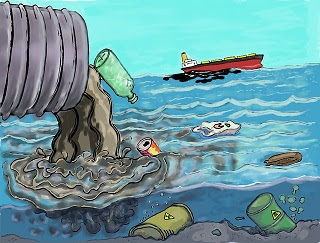Man cannot survive without water, But this water may be the causes of disaster if it is polluted by harmful agencies and used for drinking purpose. Absolutely pure water cannot be expected. When the rainwater flows as run-off. it passes through the ground surface gets collected in rivers, lakes and ponds. On its way, the water polluted by harmful salts, acids, minerals, posses bacteria radioactive substance etc. Hence the water may possess undesirable colour, odour, taste and even disease-causing microorganism.
In early days, This type of surface water was consumed by human beings for drinking, bathing, washing etc. In those days man did not have the technical knowledge for purifying contaminated water. As a result, the man had to suffer water-borne disease like dysentery, cholera, etc. and innumerable villages were destroyed by epidemics.
With the growth of civilisation and the development of towns or cities, the man began to think over the issue of pure water for drinking, the safety of life and a healthy environment. Though absolute pure water cannot be available, it should contain the least amount of impurities which may not be injurious to human health. Such water is known as wholesome water or potable water. The potable water should have the following properties:
1. It should be very clear.( i.e.colourless)
2. It should not possess any odour
3. It should be tasteful
4. It should not contain any bacteria.
Now, to obtain the desired quality of potable water, the sample of water from the source should be collected, tested in the laboratory and necessary treatments should be recommended accordingly.
Sources of Water Pollution
Following are the sources of surface water pollution:
1. Washing clothes of a person suffering from diseases like dysentery, cholera, typhoid etc.
2. Bathing of a person suffering from skin diseases.
3. Bathing cattle.
4. Throwing dead animal in the river.
5. Discharge from industries like a tannery, chemical, dyeing, paper, etc.
6. Intensive use of chemical manure for the growth of crops.
7. Radioactive ash which may spread due to a nuclear explosion.
8. Discharge from the nuclear power plant.
9. Discharge from the nuclear research centre.
10. Debris from slips in the hilly area containing harmful salts.
11. Discharge of sewage of a town or city into a river without any treatment.
12. Use of insecticides in cultivated land containing arsenic and other harmful ingredients.
Also, read – Common Impurities In Water
Thanks for reading this article. Please, don’t forget to share it.
